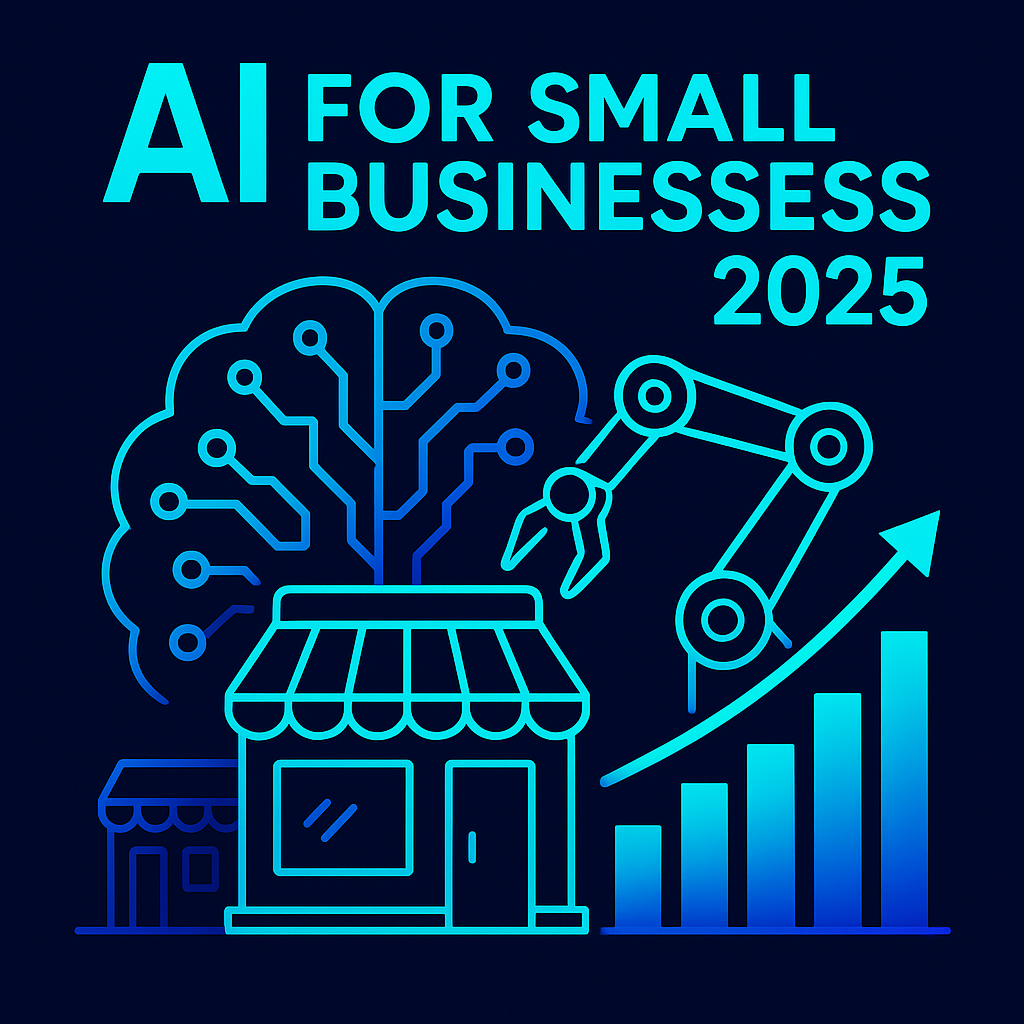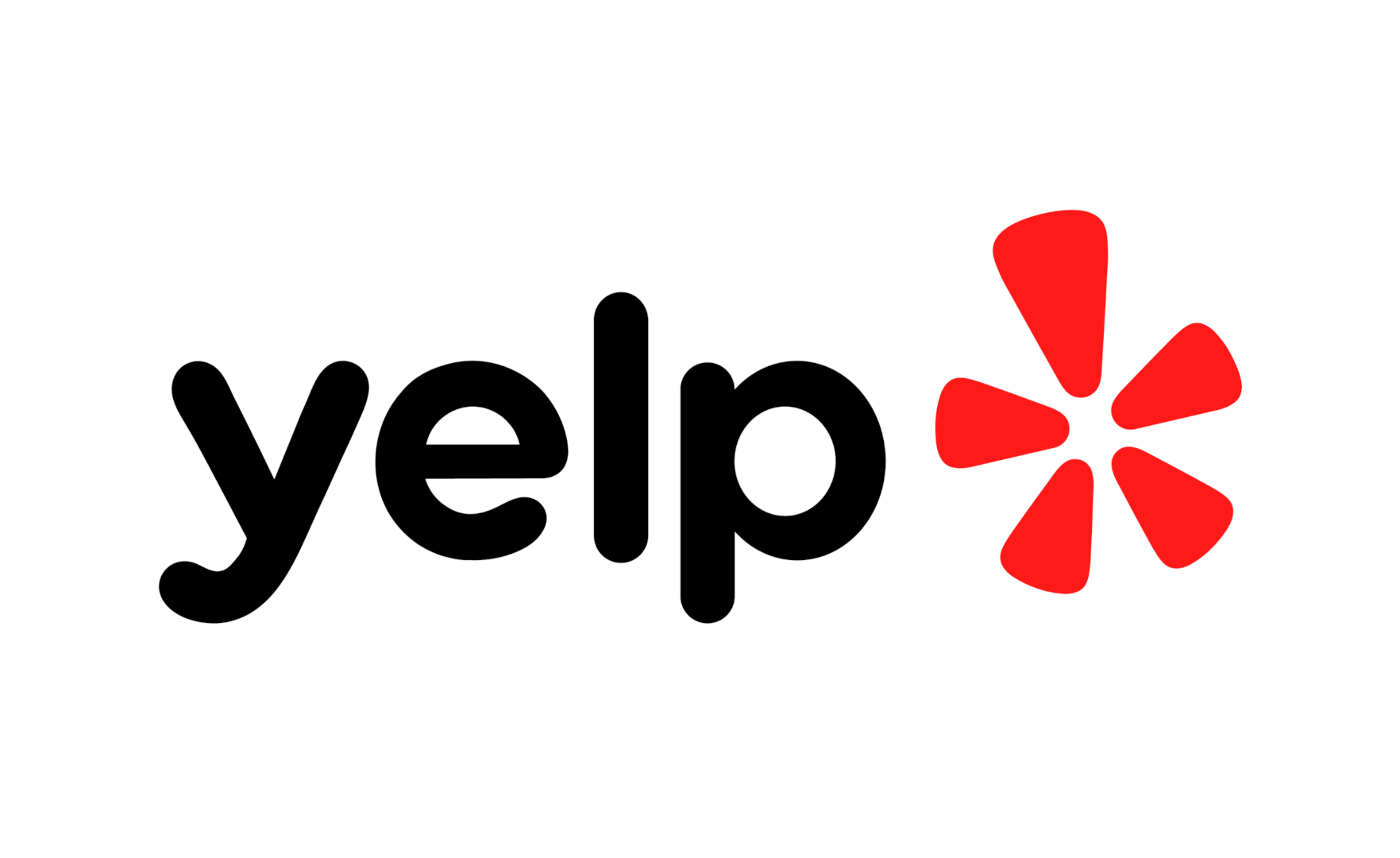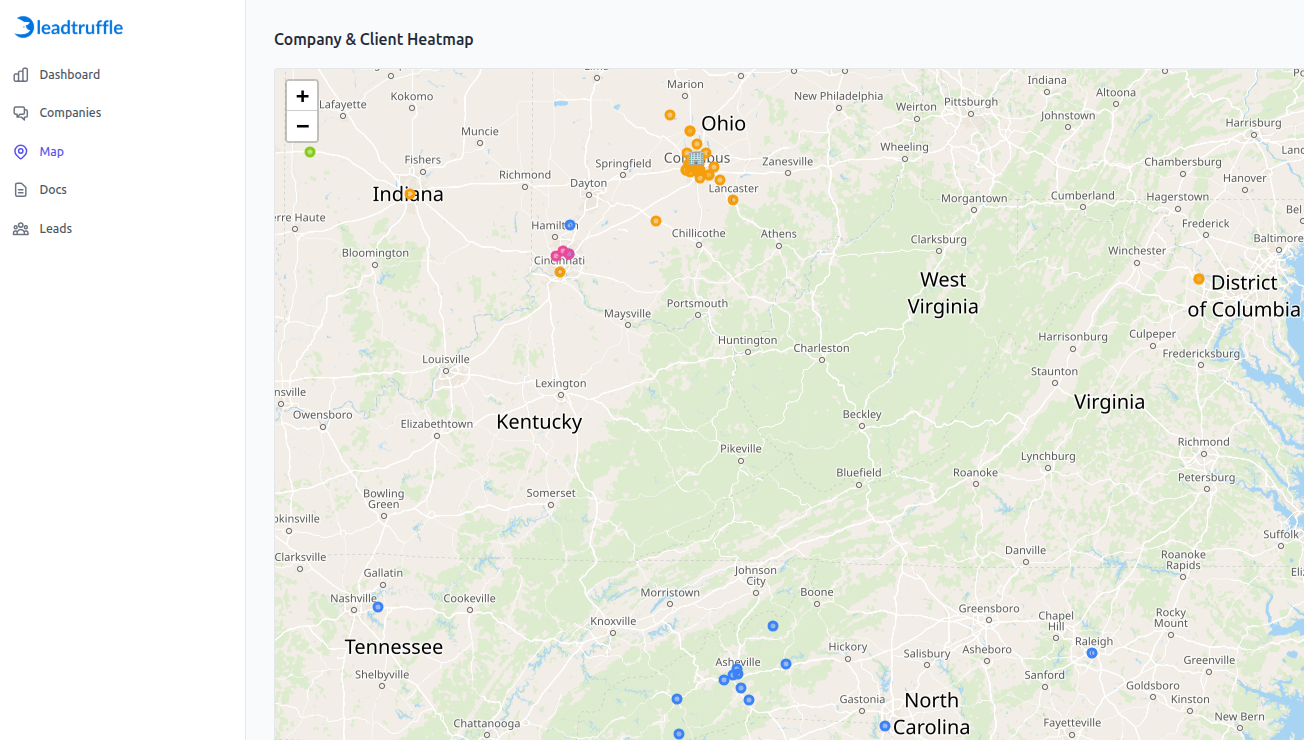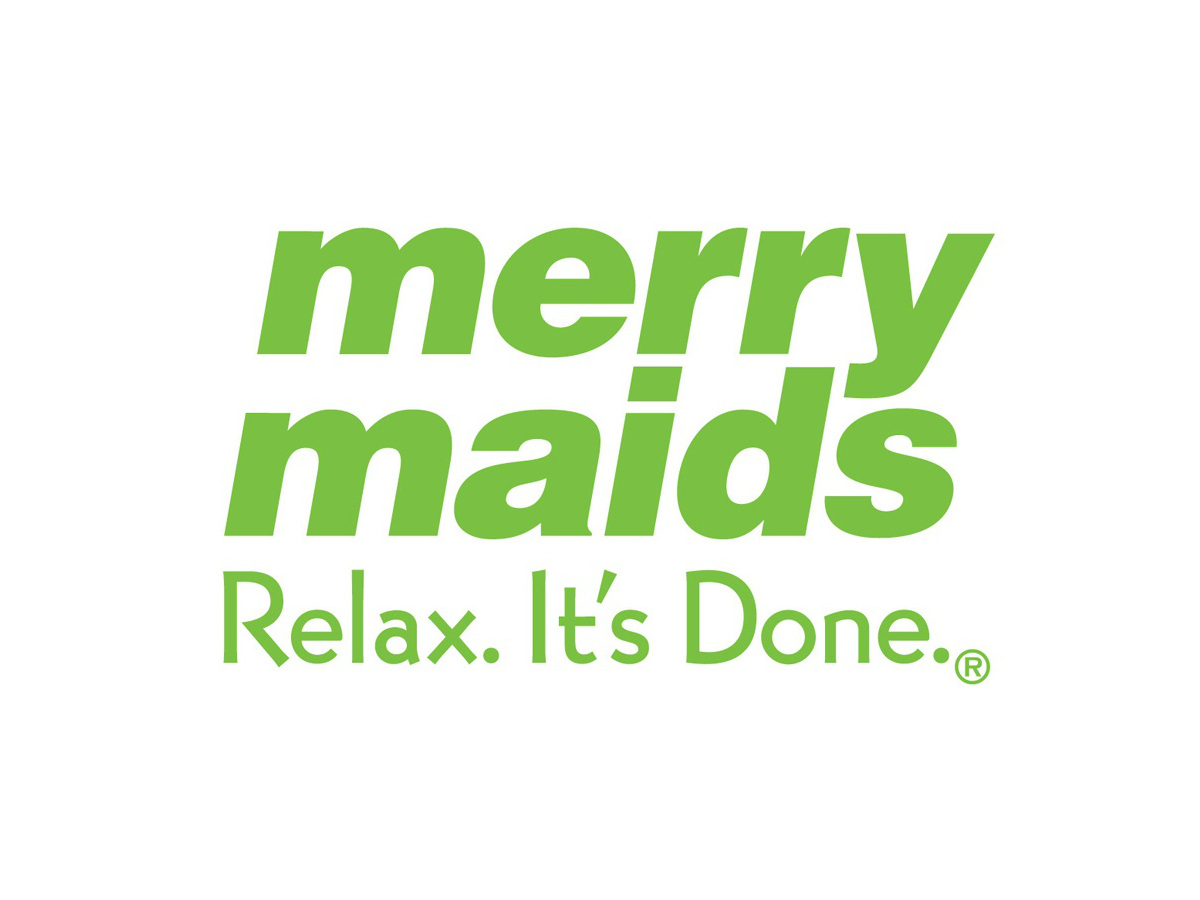
Complete Guide to AI for Small Businesses in 2025: Everything You Need to Know
Master AI implementation for your small business with this comprehensive 2025 guide. Learn which AI tools work best, how to calculate ROI, and get a step-by-step implementation roadmap that saves time and drives growth.
The artificial intelligence revolution isn’t just for tech giants anymore. In 2025, 78% of organizations use AI in at least one business function, and small businesses are rapidly catching up. But here’s the stark reality: while 75% of small and medium businesses are experimenting with AI, most are struggling to move beyond basic experimentation to actual implementation that drives results.
This comprehensive guide cuts through the hype to provide small business owners with everything they need to know about AI in 2025. Whether you’re a service-based business looking to automate customer interactions, a retail operation wanting to optimize inventory, or any entrepreneur seeking competitive advantages, this guide provides practical, actionable strategies for implementing AI that actually works.
The Current State of AI for Small Businesses
The Adoption Gap That Creates Opportunity
The data reveals a massive opportunity hiding in plain sight. According to the U.S. Census Bureau, only 5.8% of businesses with 1-4 employees actively use AI in their operations, despite this being the second-highest adoption rate by company size. Meanwhile, 71.9% of small businesses admit they don’t know enough about AI tools to implement them effectively.
This creates what we call the “AI Implementation Gap” - a window of opportunity for forward-thinking small business owners to gain significant competitive advantages while their competitors remain on the sidelines.
Small Business AI Adoption by Company Size (2025)
- 1-4 employees: 5.8% (highest adoption among small businesses)
- 5-9 employees: 3-4%
- 10-19 employees: 3-4%
- 20-49 employees: 3-4%
- 50-99 employees: 3-4%
- 250+ employees: 7.8% (enterprise leaders)
Source: U.S. Census Bureau, “Is AI Use Increasing Among Small Businesses?”
The data shows an interesting pattern: the smallest businesses (1-4 employees) are actually outpacing mid-sized companies in AI adoption. This suggests that agility and direct decision-making power can be more important than resources when it comes to AI implementation.
Why Small Businesses Need AI in 2025
The Economic Impact is Real and Measurable
Small businesses implementing AI aren’t just keeping up - they’re pulling ahead. The numbers speak for themselves:
Revenue Impact:
- 91% of SMBs with AI report revenue boosts
- 83% of sales teams using AI saw revenue growth vs. 66% without AI
- 80% of businesses using AI for marketing/sales see revenue increases, with 40% seeing gains of 6% or more
ROI and Cost Savings:
- Average ROI: 3.7x return on initial AI investment
- Top performers achieve 10.3x ROI
- Median annual savings: $7,500 per business implementing AI
- 25% of small businesses report annual savings exceeding $20,000
Productivity Gains:
- Small business owners save 13 hours per week on personal tasks with AI
- Additional 13 hours saved on employee tasks per week
- 59% more documents produced with generative AI vs. manual creation
- 66% increase in worker throughput when using AI tools
The Competitive Advantage Window is Closing
With AI model pricing dropping 99.7% in two years, the cost barrier that once protected large enterprises has virtually disappeared. Small businesses that act now can establish market leadership before AI becomes table stakes in their industry.
Market Growth Trends:
- AI software market growing at 25% annually through 2030
- AI productivity tools market expanding 25.82% per year
- 2025 AI software market size: $174.1 billion
Understanding AI for Small Business: Beyond the Buzzwords
What Actually Counts as “AI” for Small Businesses
When we talk about AI for small businesses, we’re not discussing science fiction. We’re talking about practical tools that automate tasks, improve decision-making, and enhance customer experiences. Here’s what AI looks like in practice:
Narrow AI Applications (What You’ll Actually Use):
- Chatbots that qualify leads and answer customer questions 24/7
- Email automation that personalizes messages based on customer behavior
- Inventory management systems that predict demand and optimize stock
- Voice assistants that schedule appointments and take messages
- Content generators that create marketing copy and social media posts
- Data analysis tools that identify trends and opportunities
What AI is NOT for most small businesses:
- Complex machine learning models requiring data scientists
- Expensive custom development projects
- Replacement for human judgment and creativity
- Solutions to every business problem
The Four Types of AI Every Small Business Should Know
1. Automation AI Handles repetitive tasks without human intervention. Examples: Email responses, appointment scheduling, data entry
2. Prediction AI Analyzes patterns to forecast outcomes. Examples: Sales forecasting, inventory optimization, customer churn prediction
3. Recommendation AI Suggests actions based on data analysis. Examples: Product recommendations, content suggestions, pricing optimization
4. Conversation AI Interacts with customers through text or voice. Examples: Chatbots, voice assistants, automated phone systems
The Small Business AI Readiness Assessment
Before diving into specific tools, take this assessment to determine your AI readiness level. Rate each area from 1-5:
Technology Infrastructure
- Reliable internet connection (minimum 25 Mbps)
- Cloud-based systems for data storage and access
- CRM or customer management system in place
- Team comfortable with new technology adoption
- Regular data backups and security measures
Business Processes
- Documented standard operating procedures
- Clear customer journey mapping
- Consistent data collection from customers
- Regular review of business metrics
- Willingness to change existing processes
Financial Resources
- Monthly budget of $50-500 for AI tools
- Ability to invest in employee training
- Understanding of expected ROI timeframes
- Comfort with subscription-based pricing
- Emergency fund for business operations
Scoring:
- 20-25 points: AI-ready - Start with advanced implementations
- 15-19 points: Good foundation - Begin with basic AI tools
- 10-14 points: Needs preparation - Focus on foundational improvements first
- Below 10 points: Foundation building required - Start with general business systems
The 25 Best AI Tools for Small Businesses in 2025
Based on extensive research across 200+ AI tools, here are the top solutions organized by business function and budget.
Lead Generation & Sales AI
1. LeadTruffle - $97-297/month AI-powered lead qualification and missed call recovery for service businesses. Automates lead capture and qualifying conversations 24/7. Best for: Home services, contractors, local businesses
2. Saleshandy - $25-95/month Email automation with AI-powered personalization and lead tracking. Best for: B2B sales teams, consultants
3. Seamless.AI - $147-417/month AI-driven lead discovery and contact database. Best for: Sales teams needing prospect research
4. Conversica - $300-1000/month AI sales assistant that nurtures leads through email conversations. Best for: Businesses with high lead volumes
Customer Service AI
5. Intercom - $39-99/month AI chatbot with customer support integration and workflow automation. Best for: SaaS companies, e-commerce
6. Zendesk Answer Bot - $49-99/month AI-powered customer support that integrates with existing help desk. Best for: Businesses with existing support systems
7. ChatGPT Plus - $20/month Advanced conversational AI for customer inquiries and content creation. Best for: Solo entrepreneurs, consultants
8. Ada - $300-600/month No-code chatbot platform with advanced AI capabilities. Best for: Mid-size businesses with complex support needs
Marketing & Content AI
9. Jasper AI - $24-59/month AI content creation for blogs, social media, and marketing copy. Best for: Marketing agencies, content creators
10. Buffer AI Assistant - $5-99/month Social media scheduling with AI-generated content suggestions. Best for: Small businesses managing multiple social accounts
11. Canva Magic Studio - $12.99-30/month AI-powered design tools for creating marketing materials. Best for: Businesses needing professional graphics
12. Mailchimp - $10-300/month Email marketing with AI-powered send time optimization and content suggestions. Best for: E-commerce, retail businesses
Analytics & Insights AI
13. Google Analytics Intelligence - Free AI-powered insights and anomaly detection for website analytics. Best for: All businesses with websites
14. Tableau - $70-70/month Data visualization with AI-powered insights and forecasting. Best for: Data-driven businesses
15. MonkeyLearn - $299-2499/month Text analysis AI for customer feedback and survey analysis. Best for: Businesses with large amounts of text data
Operations & Productivity AI
16. Zapier - $19.99-599/month Workflow automation connecting different business applications. Best for: Businesses using multiple software tools
17. Notion AI - $8-15/month AI-powered workspace for documentation, project management, and knowledge bases. Best for: Small teams, consultants
18. Calendly - $8-16/month AI-powered scheduling with meeting preferences and availability optimization. Best for: Service providers, consultants
19. Grammarly Business - $12.50-15/month AI writing assistant for professional communication. Best for: All businesses with written communication
Financial & Accounting AI
20. QuickBooks - $15-180/month Accounting software with AI-powered expense categorization and cash flow insights. Best for: Most small businesses
21. Xero - $13-70/month Cloud accounting with AI bank reconciliation and invoice processing. Best for: Businesses needing mobile accounting access
22. Receipt Bank (Dext) - $10-35/month AI-powered expense management and receipt processing. Best for: Businesses with high expense volumes
Industry-Specific AI Tools
23. ServiceTitan - $300-500/month Field service management with AI-powered scheduling and dispatching. Best for: HVAC, plumbing, electrical contractors
24. Shopify Magic - $29-299/month E-commerce platform with AI-powered product descriptions and SEO. Best for: Online retailers
25. HubSpot - $45-1200/month CRM with AI-powered lead scoring and sales forecasting. Best for: B2B businesses, agencies
AI Implementation Roadmap: 6 Weeks to AI Success
Based on analysis of successful AI implementations, here’s a proven 6-week roadmap that gets results.
Week 1: Foundation and Assessment
Days 1-2: Business Audit
- Complete the AI readiness assessment
- Document current pain points and time-consuming tasks
- Identify top 3 areas where AI could have immediate impact
- Calculate current costs of manual processes
Days 3-5: Tool Research and Selection
- Research 3-5 AI tools for your highest-impact area
- Read reviews and case studies from similar businesses
- Sign up for free trials where available
- Create comparison spreadsheet with features, pricing, and implementation requirements
Days 6-7: Planning and Preparation
- Set success metrics and expected outcomes
- Prepare team for upcoming changes
- Ensure technical requirements are met
- Create implementation timeline and budget
Week 2: First AI Tool Implementation
Days 8-10: Setup and Configuration
- Install and configure your first AI tool
- Connect to existing systems (CRM, email, website)
- Set up basic workflows and automation rules
- Test functionality with sample data
Days 11-14: Team Training and Testing
- Train team members on new AI tool usage
- Run parallel systems during testing phase
- Document new processes and procedures
- Address any technical issues or concerns
Week 3: Optimization and Refinement
Days 15-17: Performance Monitoring
- Monitor AI tool performance against baseline metrics
- Collect feedback from team and customers
- Identify areas for improvement or adjustment
- Fine-tune settings and workflows
Days 18-21: Process Integration
- Fully integrate AI tool into daily operations
- Discontinue parallel manual processes
- Update customer communication about new capabilities
- Train additional team members as needed
Week 4: Measuring Results and ROI
Days 22-24: Data Collection
- Compile performance data from first 2 weeks of full operation
- Calculate time savings and efficiency improvements
- Measure customer satisfaction impact
- Document unexpected benefits or challenges
Days 25-28: ROI Analysis
- Calculate actual vs. projected ROI
- Identify additional opportunities for optimization
- Plan for scaling successful implementations
- Prepare case study documentation
Week 5: Second AI Tool Evaluation
Days 29-31: Next Priority Assessment
- Evaluate success of first implementation
- Identify next highest-impact area for AI adoption
- Research complementary AI tools
- Plan integration strategy for multiple AI systems
Days 32-35: Advanced Features and Integrations
- Explore advanced features of existing AI tool
- Set up integrations with other business systems
- Implement automated workflows between tools
- Test cross-platform functionality
Week 6: Scaling and Future Planning
Days 36-38: Team Expansion and Training
- Train additional team members on AI tools
- Create standard operating procedures
- Establish ongoing optimization processes
- Set up regular performance review schedule
Days 39-42: Strategic Planning
- Develop 90-day AI expansion plan
- Identify budget requirements for additional tools
- Plan for team growth and skill development
- Create competitive advantage strategy
Overcoming Common AI Implementation Barriers
Barrier 1: “AI is Too Expensive for Small Businesses”
Reality Check: 67% of small businesses spend less than $50/month on AI tools, and many powerful AI solutions start at $10-25/month.
Solutions:
- Start with one tool in your highest-impact area
- Choose tools with free trials or freemium models
- Calculate ROI based on time savings, not just revenue increase
- Consider AI tools as replacing other software subscriptions
Cost-Effective AI Starting Points:
- ChatGPT Plus ($20/month) for content and customer service
- Buffer AI Assistant ($5/month) for social media management
- Google Analytics Intelligence (free) for business insights
- Zapier Starter ($19.99/month) for automation
Barrier 2: “AI is Too Complex for Non-Technical Teams”
Reality Check: Modern AI tools are designed for business users, not programmers. 60% of employees take less than a month to become proficient with AI tools.
Solutions:
- Choose no-code/low-code AI solutions
- Start with tools that integrate with software you already use
- Invest in training (most tools offer free onboarding)
- Begin with simple use cases and gradually increase complexity
Beginner-Friendly AI Tools:
- Canva Magic Studio for design
- Grammarly for writing assistance
- Calendly for scheduling automation
- Mailchimp for email marketing
Barrier 3: “We Don’t Have Enough Data for AI”
Reality Check: Many AI tools work effectively with small datasets or can function immediately without historical data.
Solutions:
- Choose AI tools that don’t require large datasets
- Start collecting data systematically while implementing AI
- Use AI tools that improve over time as they gather data
- Focus on forward-looking AI applications rather than historical analysis
Low-Data AI Applications:
- Chatbots (start working immediately)
- Content generation tools
- Email automation
- Social media scheduling
Barrier 4: “AI Will Replace Our Employees”
Reality Check: 68% of employees want employers to use more AI, and small businesses typically use AI to augment rather than replace human capabilities.
Solutions:
- Frame AI as a tool to eliminate boring, repetitive tasks
- Show how AI frees up time for higher-value activities
- Involve employees in AI tool selection and implementation
- Provide training to help employees work alongside AI
Human-AI Collaboration Examples:
- AI handles initial customer inquiries, humans handle complex issues
- AI creates content drafts, humans review and refine
- AI schedules appointments, humans conduct the actual services
- AI analyzes data, humans make strategic decisions
Industry-Specific AI Implementation Strategies
Home Services (Plumbing, HVAC, Electrical, Roofing)
Priority AI Applications:
- 24/7 Lead Capture: AI chatbots and missed call text-back systems
- Appointment Scheduling: Automated booking with availability optimization
- Customer Follow-up: Automated service reminders and review requests
- Emergency Response: AI-powered prioritization of urgent service calls
Recommended Tech Stack:
- LeadTruffle for lead qualification and missed call recovery
- ServiceTitan or Jobber for operations management
- Mailchimp for customer communication
- Google Analytics Intelligence for business insights
Expected ROI: 200-400% within 6 months through improved lead conversion and reduced administrative time.
Professional Services (Legal, Accounting, Consulting)
Priority AI Applications:
- Document Analysis: AI-powered contract review and data extraction
- Client Communication: Automated appointment scheduling and follow-up
- Content Creation: AI-generated blog posts and social media content
- Research Assistance: AI-powered information gathering and analysis
Recommended Tech Stack:
- Calendly for appointment scheduling
- Jasper AI for content creation
- Notion AI for documentation and knowledge management
- HubSpot for client relationship management
Expected ROI: 150-300% within 3 months through time savings and improved client capacity.
Retail and E-commerce
Priority AI Applications:
- Customer Service: AI chatbots for product questions and order support
- Inventory Management: Demand forecasting and stock optimization
- Personalization: AI-powered product recommendations
- Marketing Automation: Personalized email campaigns and retargeting
Recommended Tech Stack:
- Shopify Magic for e-commerce optimization
- Intercom for customer service automation
- Mailchimp for email marketing
- Google Analytics Intelligence for customer insights
Expected ROI: 250-500% within 4 months through improved conversion rates and reduced support costs.
Restaurants and Food Service
Priority AI Applications:
- Order Management: AI-powered phone ordering and reservation systems
- Inventory Optimization: Demand forecasting and waste reduction
- Customer Engagement: Automated review requests and loyalty programs
- Staff Scheduling: AI-optimized staffing based on demand patterns
Recommended Tech Stack:
- Toast or Square for POS with AI features
- Buffer AI Assistant for social media management
- Mailchimp for customer communication
- Simple inventory management with AI features
Expected ROI: 150-250% within 3 months through reduced waste and improved operational efficiency.
Measuring AI Success: KPIs and ROI Calculation
Essential AI Performance Metrics
Efficiency Metrics:
- Time savings per week (hours saved through automation)
- Task completion speed (before vs. after AI implementation)
- Error reduction rate (fewer mistakes in automated processes)
- Employee satisfaction (surveys about AI tool helpfulness)
Business Impact Metrics:
- Revenue per employee (productivity improvements)
- Customer response time (faster service delivery)
- Lead conversion rate (improved qualification and follow-up)
- Customer lifetime value (better customer experience)
Financial Metrics:
- Cost per acquisition (reduced through better lead qualification)
- Monthly recurring revenue (growth from improved processes)
- Operating expense ratio (reduced through automation)
- Profit margin improvement (efficiency gains)
ROI Calculation Framework
Simple ROI Formula:
ROI = (Gains from AI Investment - Cost of AI Investment) / Cost of AI Investment × 100Comprehensive ROI Calculation:
Step 1: Calculate AI Investment Costs
- Monthly subscription fees × 12 months
- Implementation time × hourly rate
- Training time × hourly rate
- Setup and integration costs
Step 2: Calculate Quantifiable Benefits
- Time savings × hourly rate × 52 weeks
- Increased revenue from better lead conversion
- Reduced costs from automation
- Improved customer retention value
Step 3: Account for Intangible Benefits
- Improved customer satisfaction
- Better work-life balance for employees
- Competitive advantage in the market
- Scalability improvements
Example ROI Calculation:
Small HVAC company implementing LeadTruffle for lead qualification:
Costs (Annual):
- LeadTruffle subscription: $1,800
- Implementation time (10 hours × $50): $500
- Training time (5 hours × $50): $250
- Total Investment: $2,550
Benefits (Annual):
- Time savings (10 hours/week × $50 × 52): $26,000
- Increased conversions (50 more jobs × $500 profit): $25,000
- Reduced advertising waste: $5,000
- Total Benefits: $56,000
ROI Calculation: ($56,000 - $2,550) / $2,550 × 100 = 2,096% ROI
Setting Up AI Success Tracking
Week 1-2: Baseline Measurement
- Document current processes and time requirements
- Measure existing conversion rates and response times
- Record current customer satisfaction scores
- Calculate current cost per lead/customer
Week 3-8: Implementation Tracking
- Monitor AI tool performance daily
- Track time savings and efficiency improvements
- Measure changes in customer interactions
- Document any unexpected benefits or challenges
Month 2-3: Comprehensive Analysis
- Calculate actual ROI vs. projections
- Survey customers about improved experience
- Assess employee satisfaction with AI tools
- Plan for scaling successful implementations
Future-Proofing Your AI Strategy
Emerging AI Trends for Small Businesses (2025-2026)
1. Voice AI Integration With 30% of searches now voice-based, voice AI will become essential for customer service and internal operations.
Implementation Strategy:
- Start with voice-activated scheduling systems
- Integrate voice AI with existing customer service
- Plan for voice-based inventory management
- Consider voice AI for hands-free operations
2. AI Agents for Autonomous Tasks AI agents that can complete entire workflows without human intervention will become mainstream.
Preparation Steps:
- Document current multi-step processes
- Identify workflows suitable for full automation
- Train team to work alongside autonomous AI
- Plan for process redesign around AI capabilities
3. Hyper-Personalization AI will enable small businesses to provide personalization previously only available to enterprise companies.
Implementation Areas:
- Personalized product recommendations
- Customized service offerings
- Individual customer communication
- Tailored pricing strategies
4. Real-Time Decision Making AI systems will provide instant insights and recommendations for immediate business decisions.
Infrastructure Requirements:
- Real-time data collection systems
- Cloud-based processing capabilities
- Mobile-accessible dashboards
- Integrated communication systems
Building an AI-First Business Culture
Leadership Principles:
- Experimentation mindset: Try new AI tools without fear of failure
- Data-driven decisions: Use AI insights to guide business choices
- Continuous learning: Stay updated on AI developments
- Employee empowerment: Give team members AI tools to improve their work
Team Development:
- AI literacy training: Ensure all employees understand AI basics
- Tool-specific training: Provide comprehensive training on implemented AI tools
- Process documentation: Maintain clear procedures for AI-assisted workflows
- Performance measurement: Track individual and team improvements from AI usage
Technology Infrastructure:
- Cloud-first approach: Ensure systems can support AI integrations
- API-ready software: Choose tools that can connect with AI systems
- Data quality systems: Maintain clean, accessible data for AI tools
- Security protocols: Implement proper security for AI tool usage
Conclusion: Your AI Implementation Action Plan
The AI revolution isn’t coming to small businesses - it’s already here. The question isn’t whether you should implement AI, but how quickly you can do it effectively. With 91% of SMBs with AI reporting revenue boosts and average ROI of 3.7x, the business case for AI adoption is clear.
Your 30-Day Quick Start Plan
Week 1: Assessment and Planning
- Complete the AI readiness assessment
- Identify your highest-impact AI opportunity
- Research and select your first AI tool
- Set baseline metrics for comparison
Week 2: Implementation
- Sign up for free trial of chosen AI tool
- Complete basic setup and integration
- Train key team members
- Begin testing with real business processes
Week 3: Optimization
- Monitor performance and gather feedback
- Fine-tune settings and workflows
- Address any technical issues
- Expand usage to additional team members
Week 4: Measurement and Planning
- Calculate initial ROI and benefits
- Document lessons learned
- Plan next AI tool implementation
- Create 90-day expansion roadmap
Key Success Factors
- Start Small: Begin with one high-impact tool rather than trying to implement everything at once
- Measure Everything: Track metrics from day one to prove ROI and guide optimization
- Train Thoroughly: Invest in proper training to ensure team adoption and success
- Iterate Quickly: Be prepared to adjust processes based on real-world performance
- Scale Gradually: Build on successful implementations rather than rushing into complex solutions
The Competitive Advantage Opportunity
Remember, only 5.8% of small businesses currently use AI effectively. This means that by implementing AI thoughtfully and systematically, you’re not just improving your business - you’re positioning yourself ahead of 94% of your competitors.
The businesses that act now, while AI adoption is still relatively low, will establish market advantages that become increasingly difficult to overcome as AI becomes mainstream. The tools are available, the costs are affordable, and the ROI is proven.
The only question remaining is: Will you be among the early adopters who benefit from this advantage, or will you wait until AI becomes table stakes in your industry?
Ready to Get Started with AI for Your Small Business?
If you’re a service-based business looking to start with AI-powered lead qualification and customer communication, LeadTruffle specializes in helping small businesses capture and qualify leads 24/7 with AI chat widgets and missed call text-back systems.
Get started with LeadTruffle and see how AI can transform your customer interactions and lead management. Our team will work with you during onboarding to customize your AI qualification flows, integrate with your existing tools, and ensure you’re capturing and qualifying leads effectively from day one.
About the Author: Bryan Shankman is the founder of LeadTruffle and has helped hundreds of small businesses implement AI solutions that drive real results. With over a decade of experience in business automation and customer experience optimization, Bryan specializes in making AI accessible and profitable for small business owners.
Related Resources:



